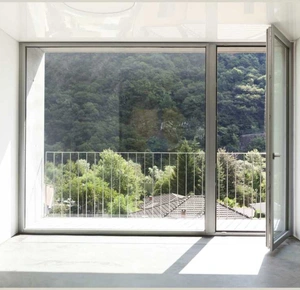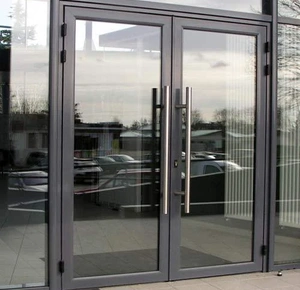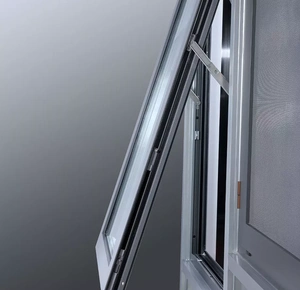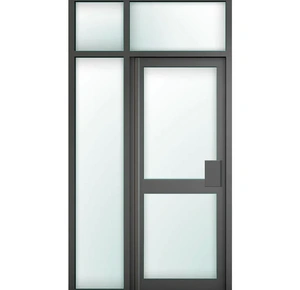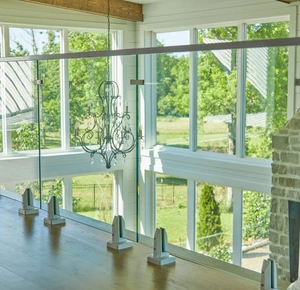A Comprehensive Guide to Sliding Windows: Types, Benefits, and Maintenance
Sliding windows are a popular window type that open horizontally by sliding one or more panels along a track. They are known for their simplicity, clean design, and wide-open views, making them a great option for homeowners looking for modern, functional windows. With the ability to let in natural light and ventilation, sliding windows are a versatile and cost-effective solution for various rooms in the house.
In this guide, we’ll explore the types of sliding windows, when to use them, their advantages and disadvantages, and the necessary maintenance to keep them in top shape. By the end, you’ll have a clear understanding of whether sliding windows are the right choice for your home.
1. What is a Sliding Window?
A sliding window is a window that opens horizontally by moving one or more sashes from side to side along a track. They are easy to operate and offer a streamlined look. Sliding windows are available in various configurations, but the basic design involves at least one movable panel (also called a sash) and a stationary one.
Sliding windows resemble double-hung windows when viewed from the side, but instead of opening vertically, they slide horizontally. This horizontal motion makes them an ideal choice for wide window openings where height is limited.
2. Types of Sliding Windows
There are three main types of sliding windows, each offering distinct features and benefits.
2.1. Single Slider Windows
A single-slider window has one fixed pane and one movable pane. The movable pane slides horizontally, allowing for ventilation. This is the most common type of sliding window and is often used in bedrooms or kitchens.
2.2. Double Slider Windows
Double-slider windows have two movable panes, allowing you to open either side for better ventilation. This design offers greater flexibility in airflow and is perfect for larger openings like living rooms or dining areas.
2.3. Three-Pane Slider Windows
In a three-pane slider, the window features three sections, with the center pane usually being fixed, and the two outer panes sliding. This type of window is excellent for creating a wide, expansive view, similar to a picture window, with the added benefit of ventilation from the sliding panes.
3. When Should You Use a Sliding Window?
Sliding windows are ideal for rooms that benefit from wide, unobstructed views and lots of natural light. They are especially well-suited for:
- Living rooms and dining rooms: Sliding windows provide wide openings and allow ample sunlight to flood these larger rooms.
- Kitchens: Their easy operation makes them perfect for spaces like the kitchen, where you need quick and easy ventilation.
- Basements: Sliding windows are commonly used in basements because they can fit into horizontally-oriented openings.
However, sliding windows are not ideal for tall, narrow spaces as their design is better suited for width rather than height.
4. Advantages of Sliding Windows
Sliding windows offer several advantages that make them a desirable option for both modern and traditional homes:
4.1. Unobstructed Views
Sliding windows provide wide, clear views of the outdoors due to their minimal framing. Their horizontal orientation gives them dimensions similar to a picture window, allowing homeowners to enjoy expansive views without bulky frames obstructing the sightline.
4.2. Excellent Ventilation
Thanks to their wide openings, sliding windows can allow large amounts of fresh air into the home. Double sliders let you open either side of the window for optimal airflow, while single sliders still offer great ventilation by fully opening one side.
4.3. Affordability
Sliding windows are often more affordable than other window types, such as casement or double-hung windows, due to their simple mechanism. Their construction is straightforward, which helps reduce costs while still offering a sleek, modern look.
4.4. Low Maintenance
With fewer moving parts compared to windows with pulleys or springs, sliding windows require minimal maintenance. Their simple sliding mechanism reduces the likelihood of components breaking or needing replacement over time.
4.5. Easy to Operate
Sliding windows are easy to open and close, making them a great choice for homeowners who want windows that don’t require much effort to operate. This ease of use is particularly beneficial for hard-to-reach places like stairwells or hallways.
5. Disadvantages of Sliding Windows
While sliding windows are a great option for many homes, they do come with a few drawbacks that should be considered.
5.1. Difficult to Clean
Cleaning the exterior of sliding windows can be tricky, especially on upper floors. Some models allow you to tilt or remove the movable sash for easier cleaning, but this can still be more challenging than other window types.
5.2. Dirt and Debris in Tracks
The sliding mechanism of these windows can accumulate dirt and debris over time, which may affect their smooth operation. Regular maintenance is required to keep the tracks clean and free of obstructions.
5.3. Weaker Seals
Sliding windows do not always seal as tightly as casement or awning windows, which can result in slight energy inefficiencies. Choosing double-glazed sliding windows can mitigate some of the energy loss, but they may not perform as well as other window types when it comes to airtightness.
5.4. Potential for Water Pooling
In some cases, water may pool in the window track, leading to issues like mildew growth or freezing in colder climates. Opting for sliding windows with proper drainage holes can help prevent this problem.
6. Maintenance Tips for Sliding Windows
To ensure your sliding windows continue to function smoothly and look great, here are some essential maintenance tips:
- Clean the tracks regularly: Use a vacuum or a damp cloth to remove any dust, dirt, or debris from the tracks. This will prevent blockages that could make the window difficult to open and close.
- Lubricate the tracks: After cleaning, apply a silicone-based lubricant to the tracks to ensure the sashes glide smoothly.
- Check for drainage issues: If water is pooling in the windowsill, make sure the drainage holes are clear and functional. If needed, clean them out to prevent water damage.
- Inspect the rollers: If your sliding windows have rollers, they may wear out over time and require replacement. Checking and replacing them when necessary ensures smooth operation.
7. Best Locations for Sliding Windows
Sliding windows are versatile and can enhance the aesthetics and functionality of many spaces within the home:
- Living Room: Their ability to provide wide, clear views and abundant natural light makes them perfect for social areas.
- Kitchen: Sliding windows are easy to operate, making them a great choice for areas where you need quick ventilation while cooking.
- Basement: Since they fit horizontally oriented spaces, sliding windows are often used in basement settings.
These windows shine in spaces where wide openings are needed, and natural light is essential.
8. Conclusion
Sliding windows are a stylish, functional, and cost-effective option for homeowners looking for easy operation, excellent ventilation, and unobstructed views. With various types, including single sliders, double sliders, and three-pane sliders, they offer flexibility to fit into almost any space in your home. However, it’s important to be mindful of their maintenance needs and consider their limitations, such as weaker seals or potential drainage issues.
When properly maintained, sliding windows can serve as an attractive and practical solution for your home, offering years of reliable use.
Frequently Question and Answers
What is a sliding window?
A sliding window opens horizontally by sliding one or more panes along a track. It offers wide, unobstructed views and excellent ventilation, making it a popular choice for modern homes.
What types of sliding windows are available?
There are three main types:
- Single slider: One fixed pane, one movable pane.
- Double slider: Two movable panes that slide horizontally.
- Three-pane slider: A fixed middle pane with sliding windows on either side.
Are sliding windows energy-efficient?
Sliding windows can be energy-efficient, especially if you choose double-pane or glazed windows. However, they may not seal as tightly as casement or awning windows, so investing in high-quality frames and glazing helps improve energy efficiency.
Where are sliding windows typically used?
Sliding windows are ideal for living rooms, kitchens, basements, and any rooms where natural light and wide views are desired. They are best for horizontal openings rather than narrow vertical spaces.
How do I maintain sliding windows?
To maintain sliding windows, regularly clean the tracks of dirt and debris, lubricate the track for smooth sliding, and inspect the rollers for wear. Keeping drainage holes clear will also prevent water buildup in the tracks.
What are the benefits of sliding windows?
Sliding windows offer unobstructed views, easy operation, excellent ventilation, and are often more affordable than other window types. They require minimal maintenance due to their simple design.
